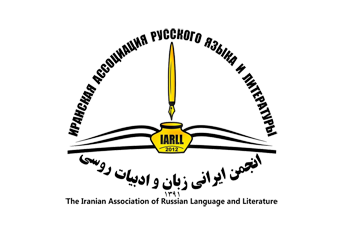IMPLEMENTATION OF SYNONYMIC POSSIBILITIES OF SOUNDING VERBS (BASED ON M. BULGAKOV’S STORY «FATAL EGGS» AND «HEART OF A DOG»)
DOI:
https://doi.org/10.61186/iarll.24.3Keywords:
Synonymy, Sounding Verbs, Semiotics, M. BulgakovAbstract
This article makes an attempt to find and classify the predicates with which M. Bulgakov endows his characters, which is one of the methods of semiotic analysis of a literary text. It is believed that analysis of the synonymous potential of the language of M. Bulgakov’s stories, at least using the example of sound verbs, can help in interpreting the text as a whole. The stories we are considering, “Heart of a Dog” and “The Fatal Eggs,” are satirical, extremely action-packed. Therefore, they are of interest for the semiotic study of text, since the text, according to semiotics, is studied as language in action. The work analyzes 53 verbs. The empirical basis of the factual material used in the work was a selection of verbs with a lexical-semantic sound variant from the main lexicographic sources. The scientific novelty of the study lies in the approach to solving the problem and is due to the lack of special works on synonymy (except for the work of Y. S. Stepanov), in particular, verbal synonymy, from the standpoint of semiotics.
Extended abstract:
This article attempts to identify and classify the predicates with which M. Bulgakov endows his characters, as one of the methods of semiotic analysis of a literary text. It is believed that analyzing the synonymous potential of the language in M. Bulgakov’s stories, at least through the example of sound-related verbs, can aid in interpreting the text as a whole. The stories under consideration, Heart of a Dog and The Fatal Eggs, are satirical and highly action-packed, making them particularly interesting for the semiotic study of text, as semiotics examines text as language in action. The study analyzes 53 verbs. The empirical basis of the factual material used in the work consists of a selection of verbs with a lexical-semantic sound component, drawn from primary lexicographic sources.
The scientific novelty of the study lies in its approach to solving the problem, which is necessitated by the lack of specialized works on synonymy—particularly verbal synonymy—from the perspective of semiotics, with the exception of the work by Y. S. Stepanov. The group of sound-related verbs we have chosen can serve as a starting point for studying synonymy from a semiotic standpoint, helping to establish the precise place of a particular lexeme within the system of synonymous relations. The semiotic aspect of the study, even when applied to a relatively small category of words, appears relevant to us.
The purpose of the study is to construct a model for analyzing synonymous series of verbs (based on sound-related verbs) from a semiotic perspective, as well as to develop a methodology for the semiotic study of synonymy using the example of a literary text.
The theoretical significance of the article lies in defining the principles of the semiotic approach to the study of synonymy and in conducting a comprehensive examination of the problem of synonymy in natural language and literary texts.
The results obtained during the study can be applied in theoretical courses and practical classes in Modern Russian Language and General Linguistics, as well as in various specialized courses and seminars.
The analysis suggests that M. Bulgakov not only fully utilized the figurative potential of expressive verbs but also enriched them, introducing new colors and shades. He identified the latent possibilities of sound-related verbs and incorporated them into occasional synonymous series. After all, the text possesses diachronic depth; it serves as the cultural memory of the work, storing numerous "codes"—both new and old, forgotten and half-forgotten—which vary in their relevance to a modern audience. Thus, synonymy emerges as a domain of infinite possibilities for creative expression in speech.
Downloads
Published
How to Cite
Issue
Section
License
Copyright (c) 2024 Issledovatel'skiy Zhurnal Russkogo Yazyka I Literatury

This work is licensed under a Creative Commons Attribution 4.0 International License.
![]()
"Creative Commons Attribution 4.0 International (CC-BY 4.0)"


